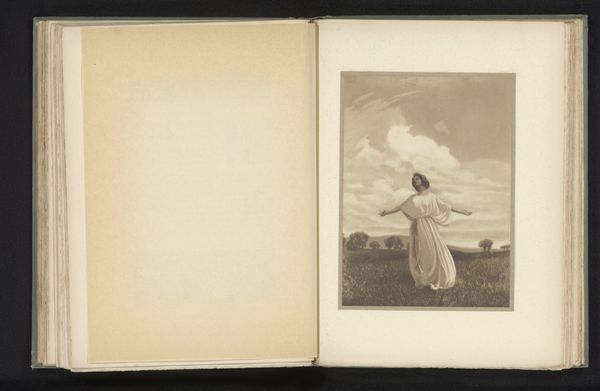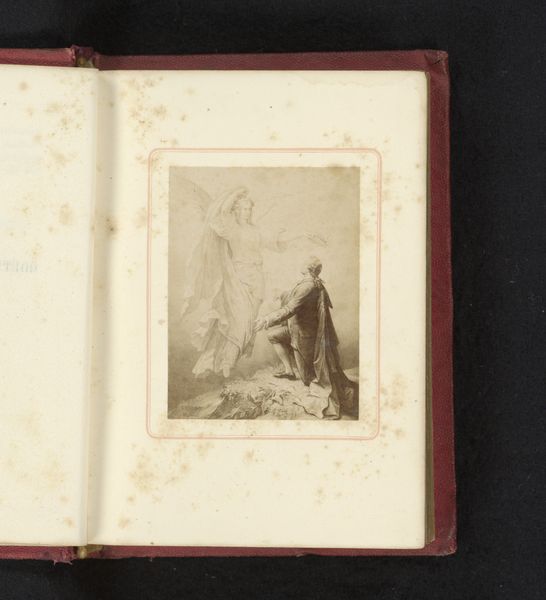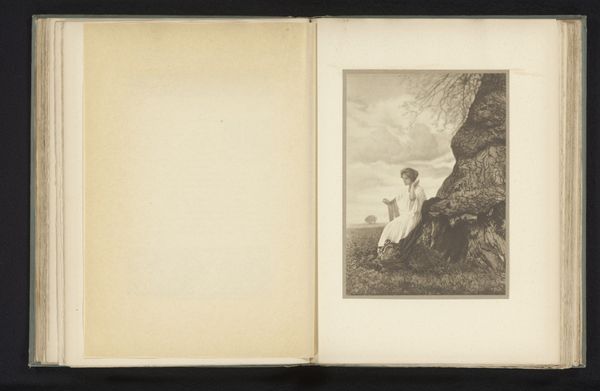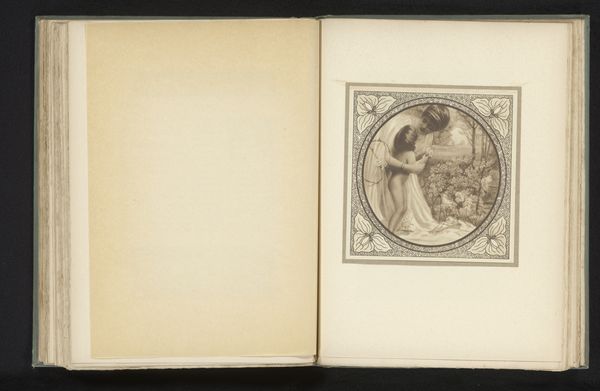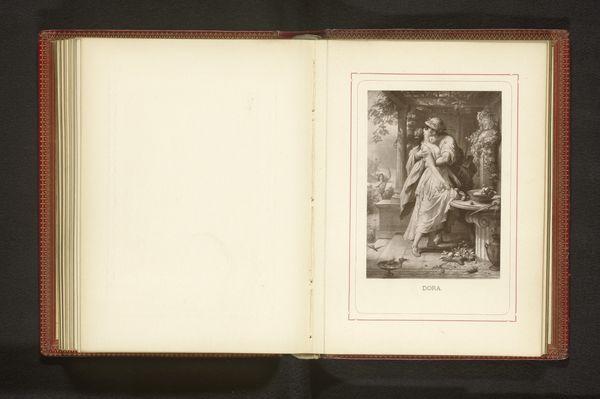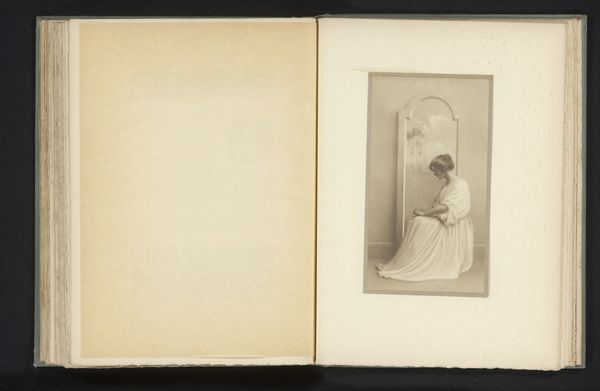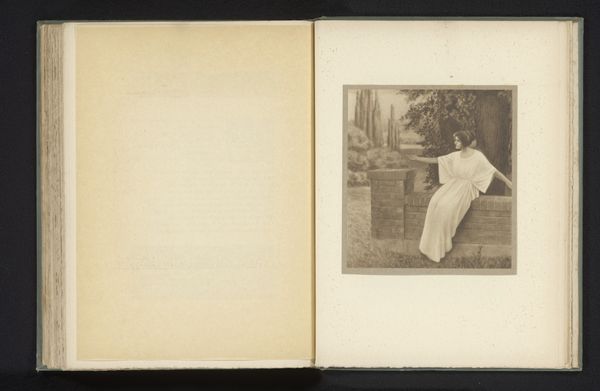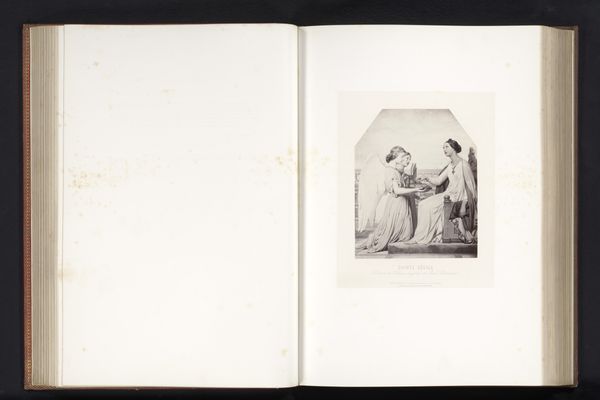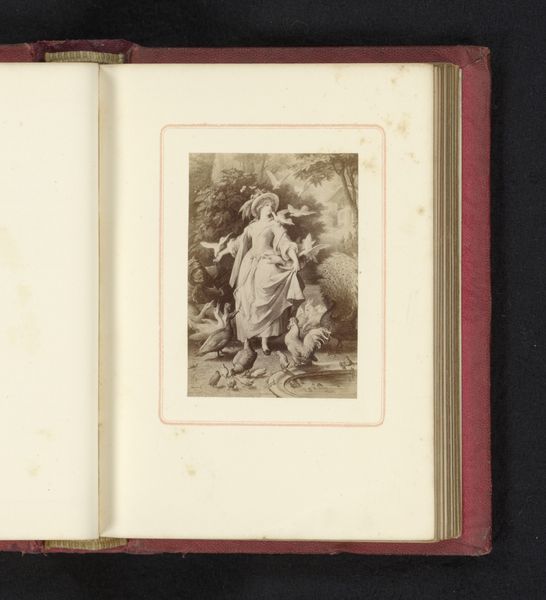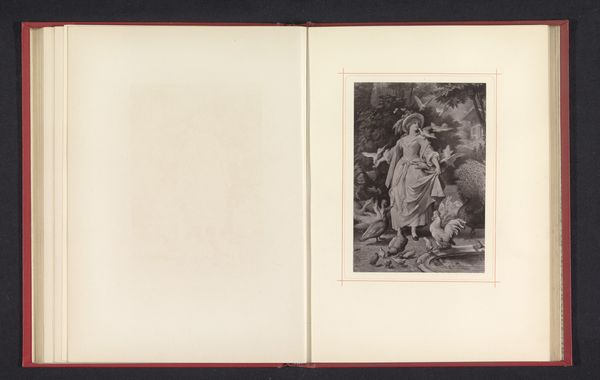
Dimensions: height 167 mm, width 105 mm
Copyright: Rijks Museum: Open Domain
Curator: This subtle photograph is called "Vrouw zittend op een bank in een landschap met lelie," or "Woman sitting on a bench in a landscape with lily" by Adelaide Hanscom Leeson. The date on it is before 1916. What are your initial impressions? Editor: It's melancholic, isn't it? A pensive figure, almost dissolving into the soft-focus landscape, rendered in these delicate sepia tones. It evokes a sense of quiet contemplation. Curator: Absolutely. Leeson was active in the Photo-Secession movement, which championed photography as a fine art. Works like this challenged the dominance of painting and argued for photography's artistic merit and aesthetic potential, something fiercely debated within the institutions and artistic circles of her time. Editor: The lily itself is doing a lot of work here. Traditionally, lilies can symbolize purity, but also death and mourning. Paired with the woman's posture, it heightens that feeling of poignant reflection. The neo-impressionist soft brush strokes make it resemble a dream. Curator: Leeson drew upon a number of different traditions, but I'd agree the choice to photograph it resembling something like neo-impressionism aligns it with Symbolist ideals that flourished at the end of the nineteenth century and well into the 20th. Symbolism really tried to express intangible experiences, fears, or desires in art. Editor: So it's not just a portrait of a woman in a garden; it's an embodiment of an emotion. This image makes one consider ideas related to beauty, transience, the female experience during a period of rapid societal change. It reminds us how powerful imagery can be even when presented in a whisper. Curator: Leeson herself had a fascinating biography as well. Her own experiences contributed, one assumes, to her poignant expression here, using genre tropes, landscapes and symbolism to render deeply personal emotions on her figures. Editor: Looking at it again, there's a stillness that lingers, it encourages us to slow down, feel. Curator: Precisely, and consider its place within art history and female photography's crucial contribution.
Comments
No comments
Be the first to comment and join the conversation on the ultimate creative platform.
